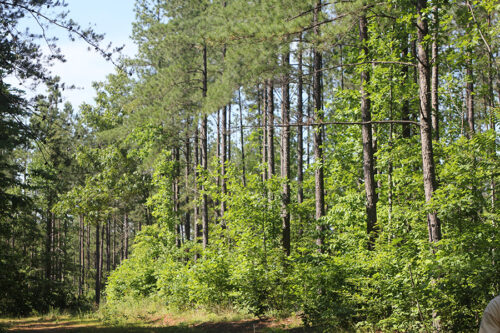
Benefits of Forest Management
Good management can be described as a wise use of one’s resources and abilities to accomplish a successful outcome. Forest management – applying practices or treatments to the forest – helps to achieve specific forest benefits for the landowner and in turn can help meet the needs of everyone living in Virginia.
Learn more about the benefits of forest management.
Hardwood Management
Hardwood trees, also called deciduous trees, are those that lose their leaves every year. In Virginia, nearly 80% of forests, or 12.6 million acres, are in hardwood or mixed hardwood-pine forests. A wide variety of native hardwood trees grow in Virginia, with nearly 100 different species present. Oak, hickory, yellow-poplar, maple, walnut, elm, ash, and dogwood are but a few of the species found in the Commonwealth. Hardwoods are important and prized for many reasons.
Learn more about hardwood management.
Pine Management
There are numerous types of pines throughout Virginia. Loblolly, shortleaf, white, and Virginia pine are the most common and the most commercially valuable. All of these pines are “sun-loving” trees that grow best when they have full sunlight. They grow fast and outcompete other trees in areas where there has been some sort of disturbance that causes an opening in the forest.
Learn more about pine management.
Wildlife Management
In addition to being managed for timber and other products, forests can be managed for wildlife. In many cases, good forest management activities can also benefit wildlife species. There are a variety of management practices that benefit wildlife primarily through providing for their habitat needs, such as shelter and food.
Learn more about wildlife management.
Restoring Diminished Tree Species
Conservation and restoration of rare or at-risk species is a high-priority for Virginia Department of Forestry. American chestnut was nearly eliminated from our forests over a hundred years ago by an imported fungus. Longleaf pine has declined across its range but in Virginia specifically it has been reduced to a population of just a few hundred remaining mature native trees. And shortleaf pine has declined in occurrence nearly 10-fold in less than a century. DOF conducts research to help reverse these trends.
Learn more about restoring diminished tree species.
